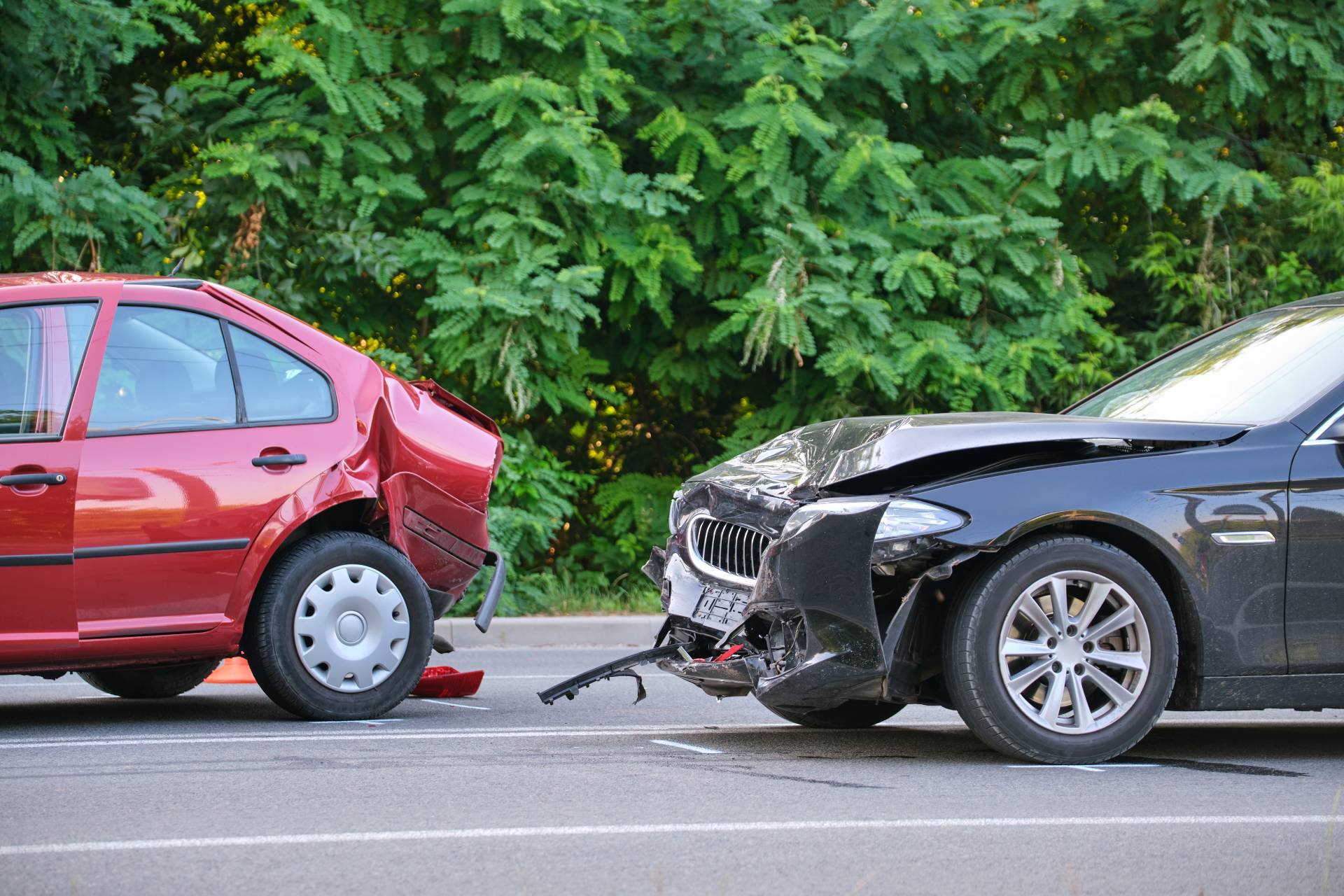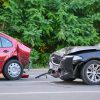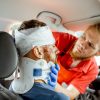Multi-car accidents, often called chain collisions or pile-ups, are among the most devastating and confusing crashes on California roads. They usually happen in seconds, triggered by one driver’s mistake, but the ripple effects can injure dozens of people and cause extensive property damage.
Unlike a simple two-car fender bender, these crashes raise difficult legal questions: Who is at fault? Who pays for the medical bills, lost wages, and property repairs? And what happens when several drivers share responsibility?
This guide breaks down the complexities of chain collisions, how fault is determined, and why working with an experienced California accident attorney is critical to protecting your rights.
Common Causes of Chain Collisions
While every accident is unique, pile-ups often share common causes:
- Tailgating: Following too closely leaves drivers with no time to react when traffic suddenly slows.
- Distracted driving: Even a glance at a phone can prevent a driver from noticing stopped cars ahead.
- Sudden braking: Abrupt stops without enough warning to trailing drivers spark many chain reactions.
- Poor weather or visibility: Fog, rain, or smoke from wildfires reduce reaction times and increase the risk of multi-car crashes.
- High-speed highways: Pile-ups are especially common on I-5, I-405, and other congested California freeways where speeds and traffic density are high.
- Commercial vehicles: Trucks require longer stopping distances, and one semi-truck misjudgment can trigger a catastrophic pile-up.
Understanding the cause is essential because it influences how faults are assigned and whether multiple drivers may share responsibility.
If you’re interested in related insights, you may also want to read our article on California’s Comparative Negligence Law to see how shared fault plays a role in these complex accidents.
Why Chain Collisions Are So Legally Complex
In a two-car crash, determining fault is usually straightforward. But in a chain collision:
- Multiple impacts occur. A vehicle may be hit from behind, pushed forward into another, and struck again. This complicates injury claims.
- Several drivers may be partly to blame. California’s comparative negligence rule means each driver can be assigned a percentage of fault.
- Insurance companies point fingers. With multiple policies involved, insurers often try to deflect blame and minimize payouts.
- Serious injuries increase stakes. Victims often face medical bills, surgeries, and long-term recovery.
For victims, this means pursuing compensation is rarely simple. Strong evidence and legal strategy become critical.
How Fault Is Determined in Multi-Car Accidents
Proving liability in a chain-reaction crash is rarely simple. Unlike a standard two-car collision, fault may be spread across several drivers, each contributing in some way to the pile-up. To sort out these complex scenarios, courts, attorneys, and insurance adjusters rely on a combination of evidence, investigative tools, and legal principles.
1. Police Reports
Law enforcement plays a vital role in the immediate aftermath of a crash. Officers document the scene, take driver and witness statements, photograph damage, and may issue citations for traffic violations such as speeding or distracted driving. While a police report is highly influential, it is not the final word on liability. Car accident attorneys often use it as a starting point before conducting a deeper investigation.
2. Eyewitness Accounts
Testimony from passengers, bystanders, and uninvolved drivers can be key in clarifying the sequence of impacts. For example, a witness may confirm that a distracted driver failed to stop in time, triggering the pile-up. These accounts can either reinforce or contradict the statements drivers provide to police or insurers.
3. Accident Reconstruction Experts
When the crash involves severe injuries or multiple vehicles, accident reconstruction experts are often brought in. Using advanced software and engineering principles, these specialists analyze skid marks, debris fields, vehicle damage, and traffic conditions to recreate how the collision unfolded. Their testimony can be pivotal in court, particularly when insurers dispute fault.
4. Video Evidence
In today’s world, video often tells the clearest story. Footage from dashcams, traffic lights, or nearby businesses can capture the moments leading up to the crash and remove much of the speculation. A single video clip can confirm whether a driver was tailgating, speeding, or distracted before the collision occurred.
5. Vehicle Data Recorders
Modern vehicles are equipped with event data recorders (often called “black boxes”) that store critical information in the seconds before impact. This includes speed, throttle position, braking, and steering inputs. In multi-car accidents, black box data can establish whether a driver attempted to stop or was traveling at unsafe speeds.
6. Medical and Damage Reports
In addition to on-scene evidence, attorneys often review medical records and repair estimates to show the order of impacts and the extent of injuries. For instance, the type and location of vehicle damage may confirm whether your car was pushed forward into another vehicle or struck multiple times.
7. Legal Principles of Comparative Negligence
All of this evidence is then weighed under California’s comparative negligence law, which allows fault to be shared among multiple drivers. One driver may be mostly responsible, but others who were speeding, tailgating, or not paying attention can also be assigned percentages of liability. This impacts how much compensation each injured party can recover and receive.
By combining physical evidence, expert testimony, and legal strategy, attorneys build a clear picture of liability. Without this thorough approach, victims risk being unfairly blamed for a crash they didn’t cause.
California’s Comparative Negligence in Action
California follows a pure comparative negligence system. This means:
- Even if you are partly at fault, you can still recover damages.
- Your compensation is reduced by your percentage of fault.
Example: If you are awarded $100,000 but found 20% at fault, your compensation drops to $80,000.
In a chain collision, one driver might be 70% responsible, another 20%, and another 10%. Sorting this out requires careful legal analysis, especially when insurers try to overstate a victim’s share of blame.
Protecting Your Rights After a Multi-Car Pile-Up
Chain collisions leave victims with more questions than answers. Who pays? How long will recovery take? Will insurance cover everything? The truth is, without the right legal strategy, accident victims often walk away with less than they deserve.
At The Law Offices of Ramtin Sadighim, we specialize in untangling complex multi-car accidents. Our auto accident lawyers have the resources to take on multiple insurers, reconstruct the crash, and fight for the maximum compensation available under California law.
If you or a loved one has been injured in a chain-reaction accident, do not wait. Evidence disappears quickly, and insurance companies are already working to minimize their payouts. Contact us today for a free consultation and let us protect your rights. Call us at 888.999.8744 or visit www.CaliAccidentAttorney.com to learn more.

 Individualized care is our specialty at the Law Offices of Ramtin Sadighim. As an experienced Los Angeles personal injury attorney, Mr. Sadighim understands that every client, case, and circumstance needs a different approach for the best results.
Individualized care is our specialty at the Law Offices of Ramtin Sadighim. As an experienced Los Angeles personal injury attorney, Mr. Sadighim understands that every client, case, and circumstance needs a different approach for the best results.



